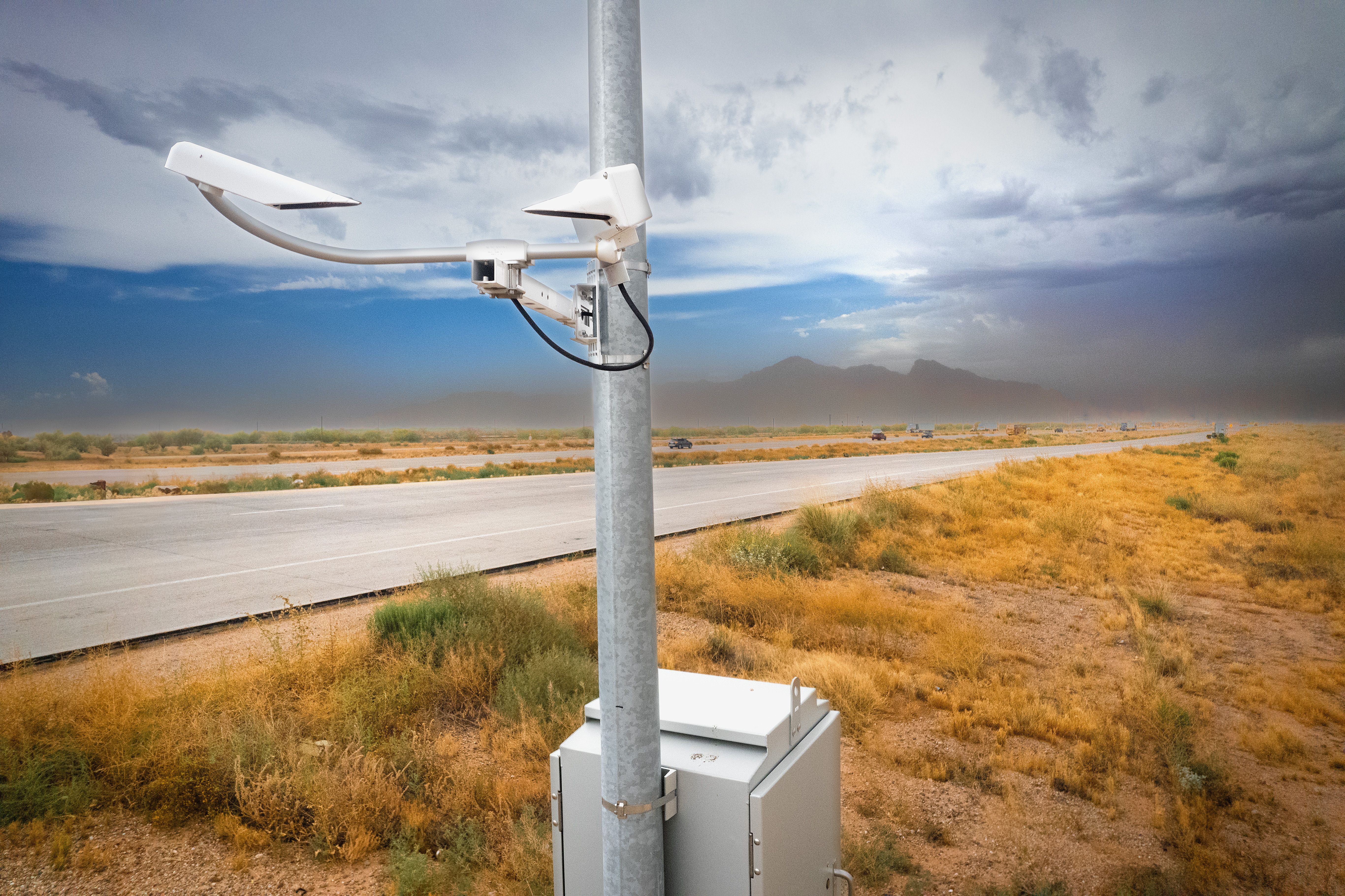Over 50 years of dust storm safety at ADOT
Over 50 years of dust storm safety at ADOT

When monsoon season comes around, most Arizonans are familiar with the thunderstorms and dust storms that can cause dangerous driving conditions.
At the Arizona Department of Transportation, we’ve been working on keeping motorists safe on the highways in areas prone to blowing dust for more than 50 years.
Between 1972 and 1973, ADOT implemented a dust warning system along 81 miles of Interstate 10 and Interstate 8 near Casa Grande. The 40 message signs could rotate between different preset messages depending on weather conditions: GUSTY WINDS, USE CAUTION and BLOWING DUST, REDUCE SPEED. In clear conditions, the signs would display information about route designation. The message signs were operated by the Arizona Department of Public Safety, whose dispatchers could change the signs using radio signals.
Later, in the summer of 1976, these signs were updated to show a “dust storm alert.” According to archive photos, motorists could tune to Phoenix radio stations KOY (550AM), KTAR (620AM) and KJJJ (910AM) for advisories about what actions to take during a dust storm when the alert was displayed.
That same year, the agency also distributed posters that explained the actions to take during dust storms and how the changeable message signs along stretches of I-8 and I-10 worked. Those posters were put up at rest stops throughout central and southern Arizona, including at the Sacaton Rest Area on I-10. Pamphlets were also distributed to motorists at ports of entry, Motor Vehicle Division offices, AAA offices and other locations.
Today, ADOT has a first-of-its-kind dust detection system located along a 10-mile corridor of I-10 between Eloy and Picacho Peak. There are 13 visibility sensors along the highway that detect the amount of dust particles in the air. When the sensors indicate that dust particles are reducing visibility, variable speed limit signs will reduce the speed limit from 75 mph to as low as 35 mph.
This system has been operational since 2020 and has proven to be reliable. The sensors have successfully detected blowing dust and reduced speed limits on the electronic signs when dust drops visibility, and drivers do slow down.
This stretch of the highway near Picacho Peak where the current dust detection system is located also used to have the original changeable message signs from the 1970s. So, ADOT has been improving on strategies with evolving technologies to help keep drivers safe in low-visibility conditions for decades.
And even today, you’ll find new posters at rest areas across the state, urging drivers to follow the Pull Aside, Stay Alive tips when encountering dust storms.
The “Pull Aside, Stay Alive” tips were developed by ADOT in collaboration with the Arizona Department of Public Safety and National Weather Service. If a dust storm is approaching, do not drive into it. But if you encounter low-visibility blowing dust and aren’t able to exit the highway, remember to:
- Check traffic around you and begin slowing down.
- Pull off as far right as you can and exit the highway before visibility becomes poor.
- Turn off all vehicle lights, including flashers. This is to prevent someone in a vehicle behind you using your lights as a beacon, possibly crashing into you.
- Set your emergency brake and take your foot off the brake.
- Stay in your vehicle with your seatbelt on and wait for the storm to pass.
